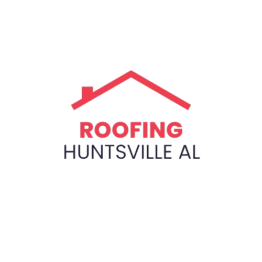Choosing the right roof type for your home or building is crucial. The roof not only contributes to the aesthetic appeal but also plays a vital role in protection and energy efficiency. Understanding the basic roof types helps you make an informed decision that suits your needs and preferences. In this comprehensive guide, we will explore various basic roof types, their characteristics, benefits, and ideal applications.
Why Roof Types Matter
The type of roof you choose impacts several aspects of your home, including:
- Durability: Different roof types offer varying levels of resistance to weather conditions and physical wear.
- Energy Efficiency: Some roofs are better at insulating your home, helping to reduce energy costs.
- Aesthetics: The roof significantly affects the overall look of your house.
- Maintenance: Maintenance requirements vary depending on the roof type and materials used.
- Cost: Initial installation and long-term maintenance costs differ among roof types.
Basic Roof Types
Understanding the basic roof types can help you select the best option for your building. Here are the most common roof types:
1. Gable Roof
Description: The gable roof is one of the most popular and recognizable roof types. It features two sloping sides that form a triangle, creating a peaked or A-frame shape.
Characteristics:
- Simple design
- Excellent drainage
- Ample attic space
Benefits:
- Easy to construct
- Cost-effective
- Good ventilation
- Works well in areas with heavy rainfall or snow
Ideal Applications:
- Residential homes
- Suburban neighborhoods
2. Hip Roof
Description: A hip roof has slopes on all four sides, which are of equal length and meet at the top to form a ridge.
Characteristics:
- More complex design than gable roofs
- Better stability and resistance to wind
Benefits:
- Highly durable
- Excellent for areas prone to high winds and hurricanes
- Improved insulation
Ideal Applications:
- Residential homes
- Coastal and windy regions
3. Flat Roof
Description: As the name suggests, a flat roof appears flat but typically has a slight pitch to allow for water drainage.
Characteristics:
- Minimal slope
- Utilized in modern and industrial architecture
Benefits:
- Provides additional usable space (e.g., rooftop gardens, terraces)
- Easier to construct and access for maintenance
- Cost-effective
Ideal Applications:
- Commercial buildings
- Modern homes
- Urban areas
4. Mansard Roof
Description: The Mansard roof, also known as a French roof, has four sides with two slopes on each side. The lower slope is steeper than the upper slope.
Characteristics:
- Distinctive, elegant appearance
- Offers additional living space (Mansard loft)
Benefits:
- Maximizes living space within the attic
- Unique architectural style
- Versatile for various designs
Ideal Applications:
- French-inspired architecture
- Historic homes
- Urban residential buildings
5. Gambrel Roof
Description: The Gambrel roof is similar to the Mansard roof but has two slopes on each side. The lower slope is steeper than the upper slope, and it’s often seen in barns and colonial homes.
Characteristics:
- Symmetrical design
- Large overhangs
Benefits:
- Provides more attic space
- Classic, rustic appearance
- Good drainage
Ideal Applications:
- Barns and farmhouses
- Colonial homes
- Storage buildings
6. Skillion Roof
Description: A skillion roof, also known as a shed roof, features a single sloping surface, often attached to a higher wall.
Characteristics:
- Simple, modern design
- Steep slope
Benefits:
- Easy and cost-effective to construct
- Ideal for water runoff
- Modern aesthetic
Ideal Applications:
- Home extensions
- Sheds
- Contemporary homes
7. Butterfly Roof
Description: The butterfly roof has an inverted V shape, resembling the wings of a butterfly. The roof slopes downwards towards the center, creating a valley.
Characteristics:
- Unique, modern design
- Central valley for water collection
Benefits:
- Allows for large windows and natural light
- Ideal for water collection systems
- Modern aesthetic
Ideal Applications:
- Eco-friendly homes
- Modern architecture
- Areas with water conservation needs
8. Curved Roof
Description: Curved roofs have a soft, arched shape, offering a sleek and modern look. The curve can be gentle or dramatic, depending on the design.
Characteristics:
- Smooth, continuous curve
- Modern aesthetic
Benefits:
- Unique, eye-catching appearance
- Improved aerodynamics
- Enhanced interior space
Ideal Applications:
- Modern and contemporary homes
- Commercial buildings
- Architectural statement pieces
Choosing the Right Roof Type
Selecting the right roof type involves considering several factors:
Climate
Your local climate plays a significant role in determining the best roof type. For instance, hip roofs are excellent for windy areas, while gable roofs are suitable for regions with heavy snow or rain.
Aesthetic Preferences
The roof type should complement the architectural style of your home. Mansard and gambrel roofs are ideal for traditional designs, while skillion and butterfly roofs suit modern aesthetics.
Budget
Different roof types vary in cost, both in terms of installation and maintenance. Flat and gable roofs are generally more affordable, while mansard and curved roofs may require a higher investment.
Functionality
Consider how you intend to use the space beneath the roof. For example, if you need extra living or storage space, a gambrel or mansard roof might be the best choice.
Local Building Codes
Ensure the chosen roof type complies with local building codes and regulations. Some areas may have restrictions based on climate, historical significance, or neighborhood standards.
Conclusion
Understanding the basic roof types helps you make an informed decision that balances aesthetics, functionality, and budget. Each roof type offers unique benefits and is suited for specific applications, climates, and architectural styles. Whether you prefer the simplicity of a gable roof or the modern appeal of a curved roof, knowing your options ensures you choose the right roof for your needs.
